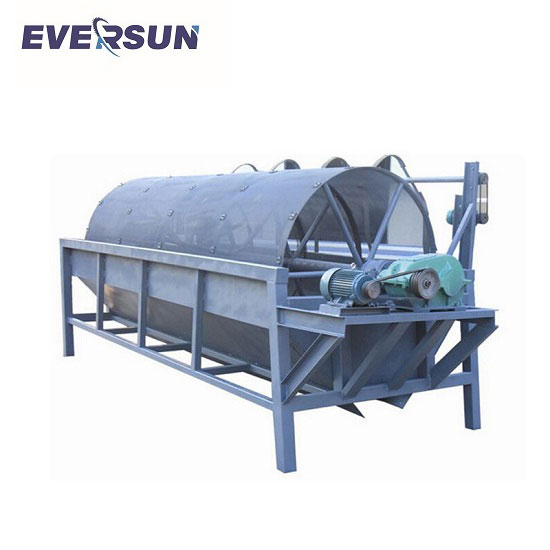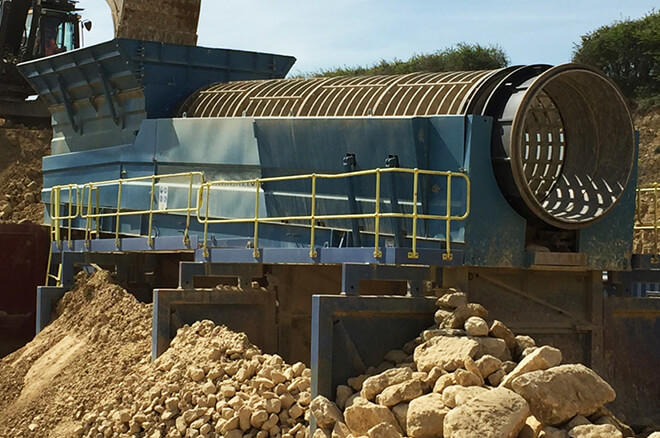Advanced Screening Innovation: Uncover Cutting-Edge Screener for Sale
Advanced Screening Innovation: Uncover Cutting-Edge Screener for Sale
Blog Article
Enhance Recycling Workflow With Screener Devices
With its ability to successfully sort and divide different products, screener equipment improves reusing operations in many ways. From raising arranging efficiency and lessening waste generation to enhancing product healing and enhancing total efficiency and throughput, the benefits are indisputable. Stay tuned to discover the crucial benefits of including screener tools into reusing procedures and just how it can help achieve lasting reusing goals.
Increased Arranging Performance
To boost the total performance of reusing procedures, the execution of screener devices has actually significantly enhanced the sorting procedure. These innovative makers have revolutionized the way recyclable products are arranged, making the procedure much faster, more exact, and more cost-efficient.
Screener equipment makes use of different methods to divide various types of products, such as paper, plastic, glass, and steels. One of the essential benefits of this technology is its capability to automate the sorting procedure, reducing the need for hand-operated labor and increasing performance. By utilizing displays, belts, and other devices, the devices effectively separates products based upon their form, weight, and size.

In addition, using screener tools makes it possible for reusing centers to manage bigger volumes of materials, thus boosting their total ability. With faster sorting speeds and enhanced precision, these makers add to a much more efficient and structured recycling procedure.
Minimized Waste Generation
The execution of screener equipment in reusing operations has actually caused a substantial reduction in waste generation. By properly dividing and arranging various sorts of materials, such as paper, plastic, metal, and glass, the screener equipment guarantees that only recyclable products are processed further, while non-recyclable waste is removed from the system. This streamlined approach decreases the quantity of waste that enters the recycling procedure, leading to a more efficient and lasting procedure.
Among the primary advantages of using screener devices is the ability to eliminate pollutants from the recycling stream. Impurities, such as food waste, dust, and other non-recyclable products, can compromise the quality of recycled products and hinder the reusing process. Using screeners assists to recognize and separate these contaminants, stopping them from infecting the last recycled materials. This not just improves the quality of the recycled products but likewise lowers the amount of waste that would or else wind up in landfills.
Additionally, screener tools enables the separation of different products based on their density, size, and form. This makes it possible for recyclers to enhance the reusing procedure by efficiently refining materials that can be conveniently recycled, while drawing away more tough materials for more processing or disposal. By optimizing the reusing capacity of various materials, the amount of waste created is reduced, contributing to a more sustainable and eco-friendly reusing operation.
Enhanced Product Healing

To achieve improved material recovery, reusing facilities make use of different strategies and equipment. One such devices is the screener, which plays an important duty in the sorting and splitting up of various products. The screener utilizes a mesh or perforated plate to separate products based upon size, thickness, and form. This allows recyclable materials to be effectively divided from non-recyclable ones, increasing the general recovery rate.
By enhancing product recuperation, recycling operations can take full advantage of the value of the waste stream. Belongings resources such as metals, plastics, and paper can be recouped and refined for reuse, decreasing the requirement for virgin basic materials. This not only saves all-natural resources but additionally minimizes energy usage and greenhouse gas emissions related to the extraction and manufacturing of brand-new products.
Moreover, enhanced product recuperation adds to a circular economy, where materials are maintained in use for as lengthy as possible. By removing and recycling useful sources, recycling procedures play a crucial duty in shutting the loophole and developing a more sustainable and resource-efficient culture.
Improved Efficiency and Throughput
Boosted functional performance is a crucial purpose in achieving enhanced performance and throughput in recycling procedures. By applying screener tools into the reusing process, drivers can successfully simplify their procedures and enhance productivity.
Screener tools plays a crucial function in dividing different products based upon their dimension and structure. This not only assists in increasing the general efficiency of the recycling process but likewise lowers the moment and initiative required for hand-operated sorting. With the capability to manage a high volume of products, screeners can considerably raise the throughput of reusing procedures.
Among the primary advantages of making use of screener equipment is its ability to get rid of pollutants and undesirable products from the reusing stream. This guarantees that only top notch products are processed even more, minimizing the risk of contamination and boosting the total item quality. By removing unwanted materials early while doing so, operators can stop traffic jams and keep a constant circulation of products, better improving productivity.
Additionally, using screener devices permits for far better source allocation and prioritization. By effectively separating products, drivers can route find more info details materials to the suitable processing streams, making best use of the application of sources and decreasing waste.
Achieving Lasting Recycling Goals
To even more optimize reusing operations and contribute to the accomplishment of lasting objectives, the implementation of screener equipment supplies a beneficial service for enhancing material splitting up and resource allocation. Attaining lasting recycling objectives is coming to be increasingly important as the world grapples with the environmental influence of waste build-up. By using screener devices, reusing facilities can improve the effectiveness and efficiency of here are the findings their operations, bring about a more lasting recycling procedure.
Screener equipment plays an important function in achieving sustainable reusing objectives by facilitating the partition of different materials. These equipments make use of screens with various mesh sizes to arrange materials based upon their dimension and composition. This makes it possible for recycling facilities to separate useful sources from waste, permitting more efficient recycling and lowering the amount of product that finishes up in garbage dumps.
Along with boosting product separation, screener devices likewise assists in source allotment. By accurately separating products, reusing facilities can much better assign sources such as workforce and energy to process different sorts of waste - screener for sale. This assists in minimizing expenses and maximizing resource application, contributing to the overall sustainability of the recycling operations
In addition, the application of screener devices also helps in decreasing contamination in the reusing procedure. Pollutants, such as click over here now unsafe compounds or non-recyclable materials, can endanger the quality of recycled materials. By utilizing screeners to effectively separate pollutants from recyclable products, recycling facilities can make sure higher-quality outcomes and boost the worth of their recycled products.
Conclusion
To conclude, making use of screener devices in reusing procedures uses many benefits. It improves arranging efficiency, lessens waste generation, improves product recovery, and raises efficiency and throughput. By accomplishing sustainable reusing objectives, it contributes to a more reliable and ecologically pleasant recycling process. Carrying out screener tools can dramatically improve the general performance of recycling operations and add to a greener future.
With its capability to efficiently arrange and separate various products, screener devices boosts reusing operations in various ways. By making the most of the recycling capacity of different products, the quantity of waste created is reduced, contributing to an extra sustainable and environmentally friendly reusing operation.
By removing unwanted products early in the procedure, drivers can protect against traffic jams and maintain a stable flow of products, further boosting performance.
To even more optimize reusing procedures and contribute to the success of lasting objectives, the implementation of screener equipment supplies a beneficial option for boosting product splitting up and source allowance. Impurities, such as non-recyclable products or unsafe materials, can compromise the high quality of recycled products.
Report this page